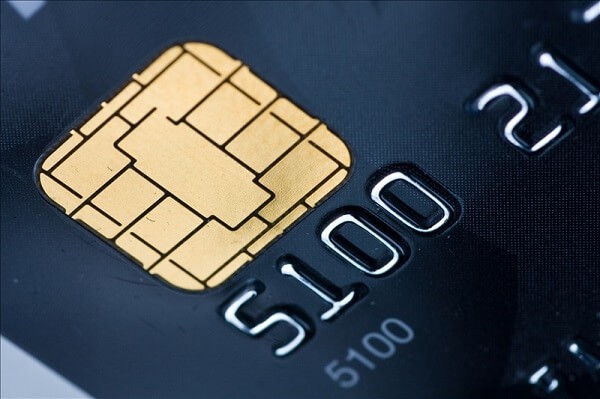Chip Credit Cards (EMV Cards) – WHY???!!!! (And why do they take so long to process?!)

Blog
The EMV credit card – the “chip credit card” – has now been around for two years. Maybe you’re wondering what “EMV” stands for? If so, let’s clear that up. It’s the acronym for Europay Mastercard Visa and is the global standard for this type of chip card that has the integrated technology to authenticate transactions (https://www.creditcards.com/credit-card-news/emv-faq-chip-cards-answers-1264.php).
Why and how did the EMV chip credit card come to be the new standard?
The EMV chip card is a “safer” alternative than traditional credit cards. The chip technology makes it significantly more difficult for counterfeit cards to be created.
With ‘regular’ credit cards, skimmers can be hidden by would-be-thieves at public terminal locations—such as gas pumps. These skimmers capture card information from the card’s magnetic strip. Likewise, there are even mobile RFID scanners that can pick up the data from the magnetic strip with a special machine “through the air.” With either method, the thief uses the data captured to get the card’s information and make a duplicate that can be used for nefarious purposes.
The EMV card is processed by machines in a completely different manner—eliminating the need for the magnetic strip. Whereas the strip was required for data storage on traditional cards processed by being swiped through machines, chip cards can be “dipped” into a terminal When the card is dipped into the merchant’s machine, data is transferred between the merchant and the issuing bank or institution. That single transaction is then verified to create a unique data file for that point in time.
This makes the magnetic strip unnecessary and thus, the card more secure and theft-resistant. Although many of the current EMV cards still have both the strip and chip while merchants get prepared – and people get accustomed – to the new method, eventually it can go away completely.
Yet, dipping isn’t the only evolving transaction method for these cards. They can also be NFC (near field communication) EMV compliant. With the NFC integration, the chip card is tapped against a scanner-equipped terminal specifically designed for this purpose. This is super-convenient for the customer or consumer but the cards – and terminals – are more expensive to produce. Therefore, while there is a push for all EMV cards to also be equipped with NFC, that will likely not happen for a bit.
But WHY does it take so long for the chip card to process?!
A tradeoff of all this new security is that the processing of EMV cards does take a bit longer than with traditional cards. However, it is the very safety it delivers that necessitates the extra time.
Essentially, the chip in the card “talks” to your bank or card financial institution through an encrypted data chain. The bank authenticates the card and transaction and sends a secure message back. For now, this digital “discussion” does take a bit longer than what consumers – and merchants – have become accustomed to with these interactions. However, again, it’s just a slight delay and the added benefit for many is a positive tradeoff.
Again, even though we are two years in to the introduction of the EMV chip card, we are still a bit from 100% adoption. As mentioned above, the integration of the chip does mean merchants need new or upgraded machines to process the cards.
Furthermore, consumers need to become accustomed to using them too. However, since people are more concerned about protection of their personal and financial information than ever before, increased safety and security is a pretty significant promise. Thus, many consider any learning or cost curve well-worth it considering the diminished theft risk this new card and card processing process promises.
